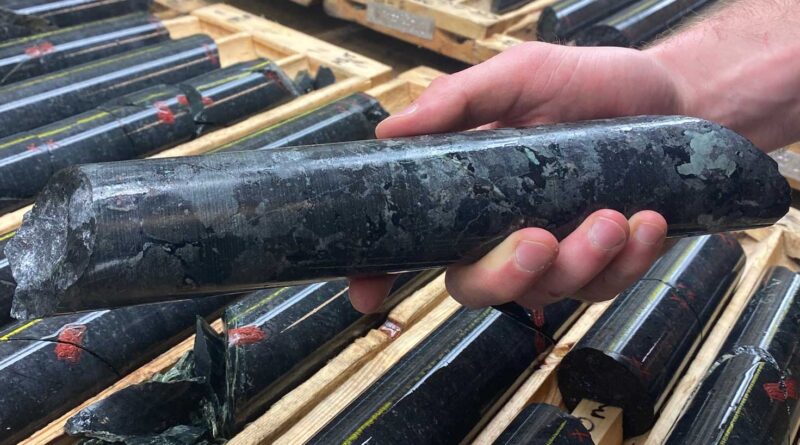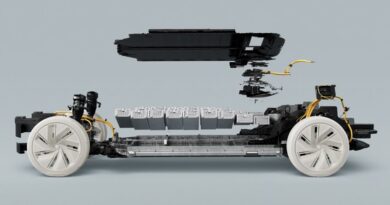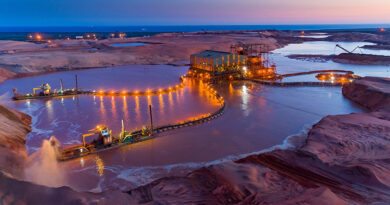Mkango announces rutile and ilmenite discovery in Malawi
Mkango Resources Ltd. has announced the results of a reconnaissance shallow soil sampling and auger programme in its 869 square kilometre Mchinji licence in Mchinji district, Malawi, held by Mkango’s 100% owned subsidiary MKA Exploration Ltd.
The results demonstrate the presence of interesting grades of rutile plus anatase (both naturally occurring mineral forms of titanium dioxide: TiO2) mineralisation of up to 1.07%, with overall TiO2 grades in the range 0.51 to 4.10% in auger samples and 0.14–2.38% in soil samples; also ilmenite grades of 1.30 to 3.40% (average 1.85%).
The grade of the TiO2-bearing minerals in the highest-grading auger hole are in the range of 0.63 to 1.07% rutile plus anatase (average 0.73%) and 1.30 to 3.40% ilmenite (average 1.85%), hosted in free-dig saprolite material from surface.
“Mkango is focused on developing the Songwe rare earth deposit in Phalombe district in Malawi and is looking forward to completing the feasibility study. We are very pleased to add this new rutile and ilmenite discovery to our portfolio of projects in Malawi. These early stage results show similarities in terms of saprolite-hosted mineralisation to the recent rutile discoveries made on the adjoining Sovereign Metals Ltd licence to the east, and suggest the potential for discovering high-grade rutile deposits within Mkango’s large licence area, in what could potentially be a new province of rutile mineralisation,” commented Mkango’s President Alexander Lemon.
Twelve vertical auger holes were drilled to depths of 0.45 to 9.40m, for a total of 35.8m, from which 41 samples were collected. Soil sampling was carried out in pits dug to 50cm (‘B horizon’) on a 500m staggered grid in four areas of the licence, producing 134 samples.
Sample preparation and analysis was provided by Scientific Services laboratory in Cape Town, employing two-acid microwave digestion and ICP-OES techniques suitable for multi-element determination and following strict internal QAQC procedures inserting blanks and standards. Internal laboratory QAQC was also completed to include blanks, standards and duplicates.
The highest TiO2 grades were returned by nine consecutive samples in a single auger hole (A6), drilled to a depth of 8.9m, that contain between 4.10 and 9.01% total heavy minerals (specific gravity > 2.95) and grade between 3.17 and 4.09% TiO2. These samples were processed by heavy mineral separation and magnetic separation and the separated fractions were sent to XRD Analytical and Consulting CC in Pretoria for quantitative determination of the heavy minerals by X-ray diffraction (“XRD”). Results are given in the table below for vertical auger hole A6 positioned at co-ordinates 507971E 8482591N in UTM Zone 36S:
Mkango is planning an exploration programme of more extensive soil sampling, additional auger drilling, and mineralogical test work to identify rutile prospects across this potential new rutile province within the Mchinji licence. The exploration programme will be funded from the Company’s existing working capital.
Rutile, anatase and ilmenite are naturally occurring TiO2 minerals, whose main uses are 90% for pigments, 5% production of titanium metal and 5% welding. Sierra Rutile owned by Iluka is the only high grade, large scale operating primary source natural rutile mine globally.
Mkango’s primary business is exploration for rare earth elements and associated minerals in the Republic of Malawi.
The main exploration targets in Mkango’s remaining three 100% held licences are, in the Thambani licence, uranium, niobium, tantalum and zircon, in the Chimimbe Hill licence, nickel, cobalt and chromite and in the Mchinji licence, rutile, gold, nickel, cobalt, base metals and graphite.
Mkango also holds a 75.5% interest in Maginito with the balance owned by Talaxis. Maginito is focused on downstream opportunities relating to the rare earths supply chain, in particular, recycling and other innovative technologies for the production of neodymium alloy powders and magnets used in electric vehicles, wind turbines and other industries geared to decarbonisation of the economy.




